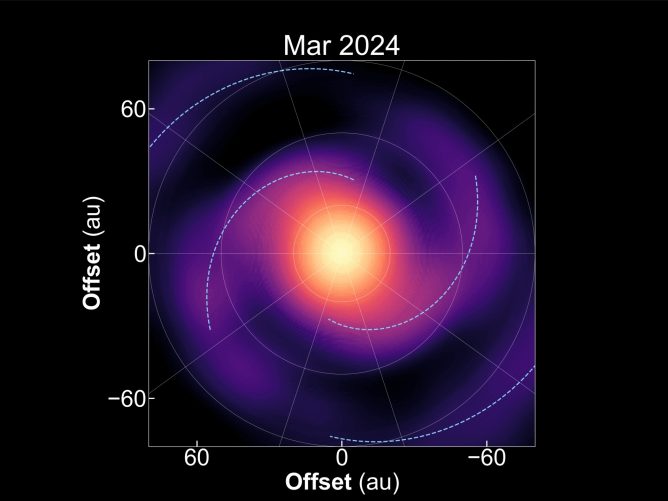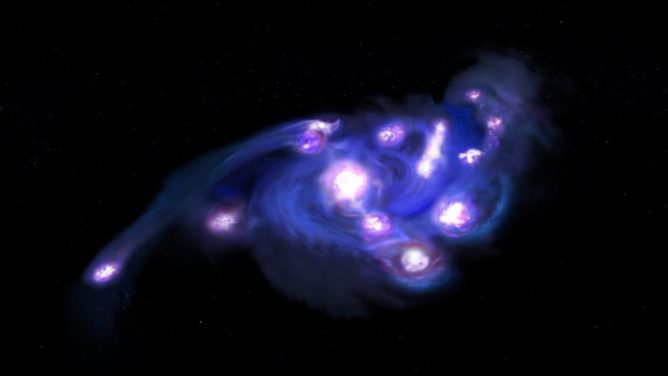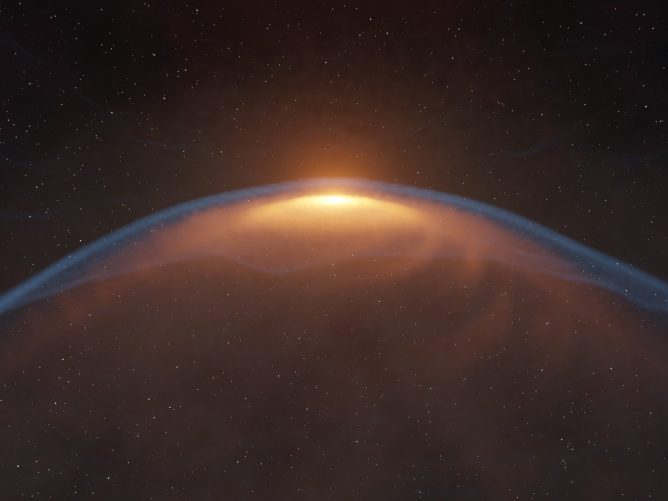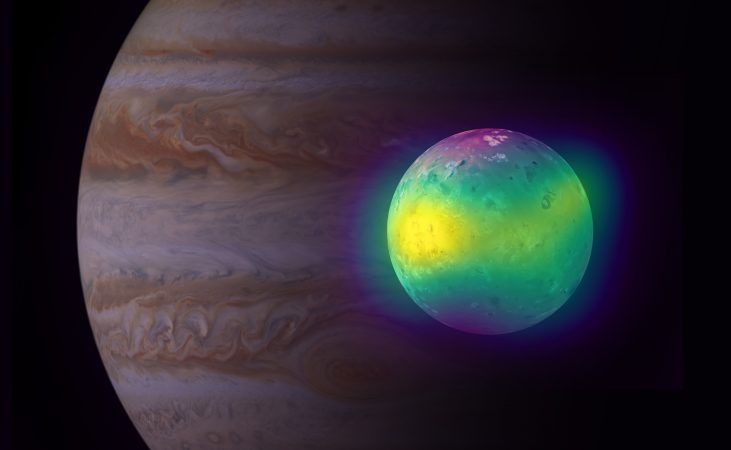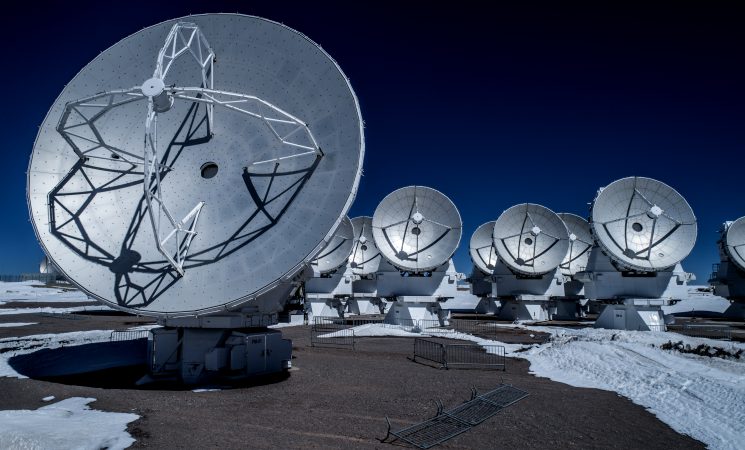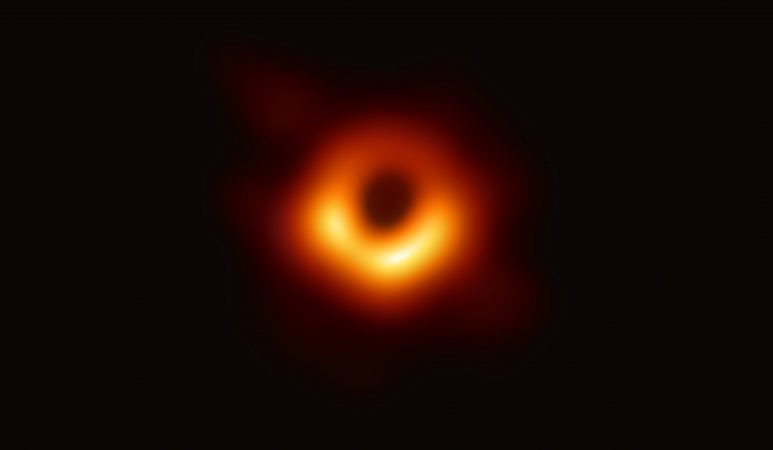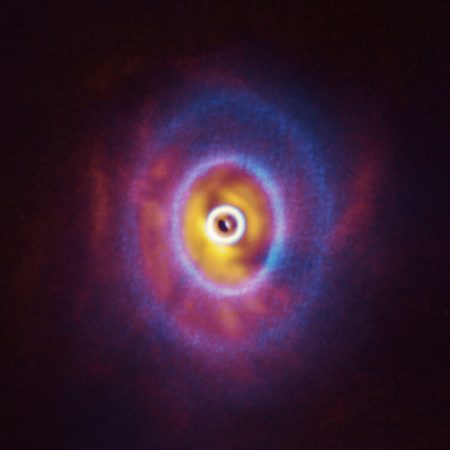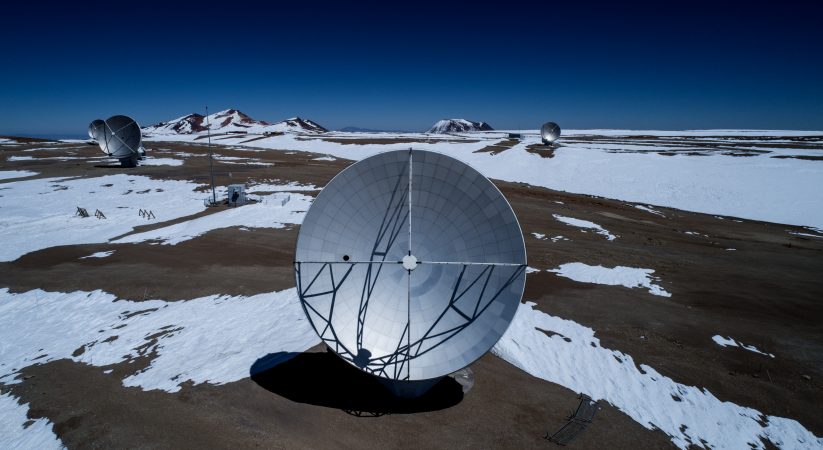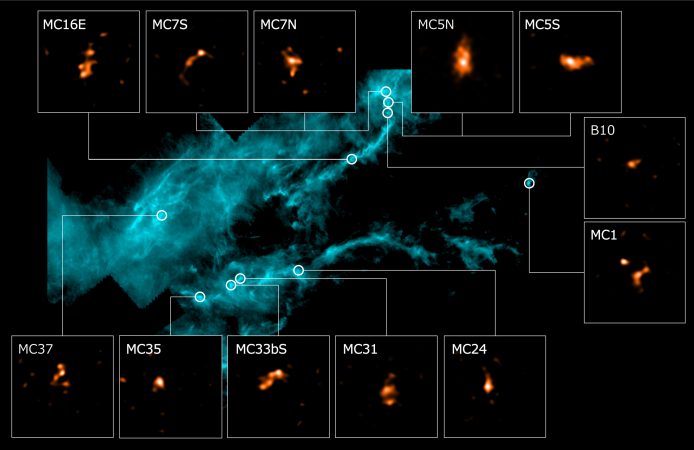New observations with the Atacama Large Millimeter/submillimeter Array (ALMA) have produced the first image of a water snow line within a protoplanetary disk. This line marks where the temperature in the disk surrounding a young star drops sufficiently low for snow to form. A dramatic increase in the brightness of the young star V883 Orionis flash heated the inner portion of the disk, pushing the water snow line out to a far greater distance than is normal for a protostar, and making it possible to observe it for the first time. The results will be published in the journal Nature on July 14, 2016.
Young stars are often surrounded by dense, rotating disks of gas and dust, known as protoplanetary disks, from which planets are born. Snow lines are the regions in those disks where the temperature reaches the sublimation point for most of the volatile molecules. In the inner disk regions, inside water snow lines, water is vaporized, while outside these lines, in the outer disk, water is found frozen in the form of snow. These lines are so important that they define the basic architecture of planetary systems like our own [1] and are usually located for a typical solar-type star at around 3 au from the star [2].
However, the recent ALMA observations, to be published in Nature, show that the water snow line in V883 Orionis is currently at more than 40 au of the central star (corresponding to Neptune’s orbit in our system), greatly facilitating its detection [3]. This star is only thirty percent more massive than the Sun, but its luminosity is 400 times brighter as it’s currently experiencing what is known as a FU Ori outburst, a sudden increase in temperature and luminosity due to large amounts of material being transferred from the disk to the star [4]. This explains the displaced location of its water snow line: the disk has been flash-heated by the stellar outburst.
Lead author Lucas Cieza explains: “The ALMA observations came as a surprise to us. Our observations were designed to look for disk fragmentation leading to planet formation. We saw none of that; instead, we found what looks like a ring at 40 au. This illustrates well the transformational power of ALMA, which delivers exciting results even if they are not the ones we were looking for.”
The discovery that these outbursts may blast the water snow line to about 10 times its typical radius is very significant for the development of good planetary formation models. Such outbursts are believed to be a stage in the evolution of most planetary systems, so this may be the first observation of a common occurrence. In that case, this observation from ALMA could contribute significantly to a better understanding of how planets form and evolve throughout the Universe.
These observation results were published in a paper entitled “Imaging the water snow-line during a protostellar outburst” to appear in the journal Nature on 14 July, 2016.
The research team is composed of:
Lucas A. Cieza [1,2], Simón Casassus [2,3], John Tobin [4], Steven Bos [4], Jonathan P. Williams [5], Sebastián Pérez [2,3], Zhaohuan Zhu [6], Claudio Cáceres [2,7], Héctor Cánovas [2,7], Michael M. Dunham [8], Antonio Hales [9], José L. Prieto [1], David A. Príncipe [1,2], Matthias R. Schreiber [2,7], Dary Ruiz-Rodríguez [10] and Alice Zurlo [1,2,3].
[1] Núcleo de Astronomía, Facultad de Ingeniería, Universidad Diego Portales, Santiago, Chile.
[2] Millenium Nucleus “Protoplanetary Disks in ALMA Early Science”, Santiago, Chile.
[3] Departamento de Astronomía, Universidad de Chile, Santiago, Chile.
[4] Leiden Observatory, Leiden University, Leiden, The Netherlands.
[5] Institute for Astronomy, University of Hawaii at Manoa, Honolulu, USA.
[6] Department of Astrophysical Sciences, Princeton University, Princeton, USA.
[7] Departamento de Física y Astronomía, Universidad de Valparaíso, Valparaíso, Chile.
[8] Harvard-Smithsonian Center for Astrophysics, Cambridge, USA.
[9] Joint ALMA Observatory, Santiago, Chile.
[10] Australian National University, Mount Stromlo Observatory, Canberra, Australia.
Notes
[1] In the solar nebula—which gave birth to our Solar System—this line was between the orbits of Mars and Jupiter during the formation of the Solar System, hence the rocky planets Mercury, Venus, Earth and Mars formed within the line, and the gaseous planets Jupiter, Saturn, Uranus and Neptune formed outside.
[2] 1 au, or one astronomical unit, is the mean distance between the Earth and the Sun, around 149.6 million kilometers. This unit is typically used to describe distances measured within the Solar System and planetary systems around other stars.
[3] Resolution is the ability to discern that objects are separate. To the human eye, several bright torches at a distance would seem like a single glowing spot, and only at closer quarters would each torch be distinguishable. The same principle applies to telescopes, and these new observations have exploited the exquisite resolution of ALMA in its long baseline modes. The resolution of ALMA at the distance of V883 Orionis is about 12 au—enough to resolve the water snow line at 40 au in this outbursting system, but not for a typical young star.
[4] Stars are believed to acquire most of their mass during these short but intense accretion events.
Artist impression of the water snowline around the young star V883 Orionis, as detected with ALMA.
Credit: A. Angelich (NRAO/AUI/NSF)


